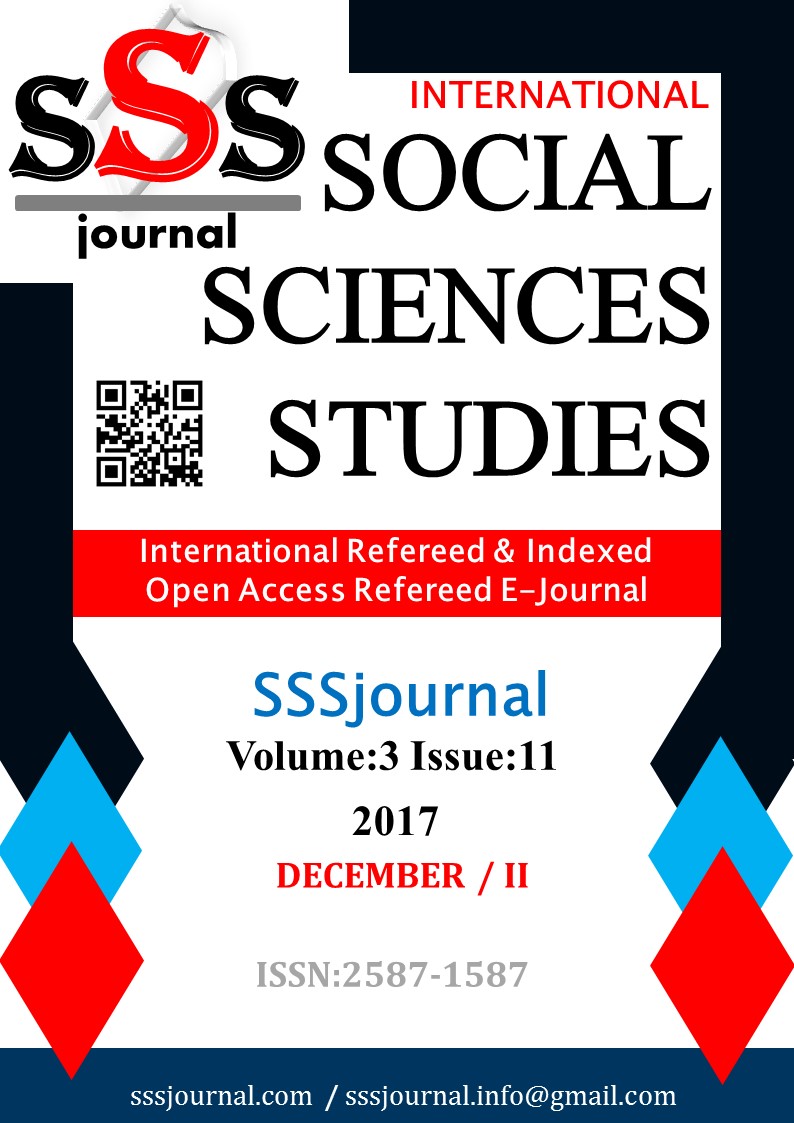YÜRÜNEBİLİR MEKANLARIN ÇEVRESEL ÖZELLİKLERİNİN YERE BAĞIMLILIK DUYGUSUNA ETKİSİ: TRABZON KIYI BANDI ÖRNEĞİ
Author :
Abstract
Kentsel açık mekanlarda, yollar, sokaklar, meydanlar, parklar ve kıyı alanları gibi konumlar insan-çevre etkileşimini oluşturan önemli açık mekanlardır. Bu konumlardan özellikle kıyı rekreasyon alanları, özellikle hareket alanı oluşturması ve sosyal etkileşime olanak sağlaması açısından oldukça önemlidir. Bu boyutuyla kıyı rekreasyon alanları, insanın yüzyıllardır en temel etkileşim aracı olan yürüme deneyimine olanak sağlamaktadır. Yürünebilir mekanlar, yalnızca fiziksel aktivite anlamında iyi yürüme olanakları sunmanın yanında, kişinin sosyal ve duygusal ihtiyaçlarına da yanıt verebilecek çevresel özellikleri sunmalıdır. Literatürde yürünebilirliği etkileyen başarılı çevresel özelliklerin neler olduğu, özellikle geniş ölçekli yayalaştırma alanları üzerinden çalışılmıştır. Bu çalışma daha küçük ölçekli yürüyüş aksının, kullanıcılarda işlevsel bağlılık (yere bağımlılık) oluşturan çevresel özelliklerin neler olduğunu ortaya koymayı amaçlamıştır. Bu kapsamda Trabzon kıyı bandında 115 katılımcı ile 2017 yılının mayıs ve eylül ayları arasında anket çalışması gerçekleştirilmiştir. Sonuç olarak kullanıcıların yürüme davranışı açısından işlevsel bağlılıklarını etkileyen çevresel faktörler, gerçekleştirilen regresyon analizleri sonucunda ortaya koyulmuştur. Çalışma sonucunda kıyı bandı yürüyüş aksında kullanıcıların işlevsel bağlılıklarını arttıran çevresel faktörlerin konfor, güvenlik, ulaşılabilirlik ve sosyalleşme faktörleri olduğu ortaya koyulmuştur.
Keywords
Abstract
In urban open spaces, locations such as roads, streets, squares, parks and coastal areas are important open spaces forming human-environment interaction. Especially coastal recreation areas from these positions are very important in terms of providing a place for movement and social interaction. With this dimension, coastal recreation areas allow people to experience walking as the most basic means of interaction for centuries. Walkable spaces should offer environmental attributes that can also respond to one's social and emotional needs, as well as providing good walking opportunities in the sense of physical activity. In the literature, what is the most successful environmental attributes that affect walkability, especially the large-scale pedestrian areas. This study aimed to reveal what the environmental attributes that make functional attachment (place dependence) in the users of the smaller scale walking axis. In this context, a survey was conducted between May and September of 2017 with 115 participants in the Trabzon coastal zone. As a result, the environmental factors affecting the functional attachment of the users in terms of walking behavior were revealed as the result of the regression analysis. As a result of the study, it has been revealed that environmental factors that increase the functional attachment of the users in the coastal shoreline are comfort, safety, accessibility and sociability factors.
Keywords
- Alfonzo, M., (2005). "To Walk or not to Walk? The Hierarchy Of Walking Needs",Environment and
- Alfonzo, M., (2005). "To Walk or not to Walk? The Hierarchy Of Walking Needs",Environment and Behaviour, 37, 808-836.
- Elabd, A., A., (2013). “Physical and Social Factors in Neighborhood Place Attachment: Implications for Design”. North Carolina State University.
- Ewing, R., & Handy, S. (2009). “Measuring the Unmeasurable: Urban Design Qualities Related to Walkability”, Journal of Urban Design, 14(1), 65–84. doi:10.1080/13574800802451155
- Forsyth, A. (2015). “What is a Walkable Place? The Walkability Debate in Urban Design”. Urban Design International, 20(4), 274-292.
- Francis, M., (2003). Urban Open Space: Designing for User Needs. Land and Community Design Case Study Series, Washington, D.C: Island Pres.
- Frank LD, Sallis JF, Saelens BE, Leary L, Cain K, Conway TL, Hess PM. (2010).”The Development of aWalkability Index: Application to the Neighborhood Quality of Life Study”. Br J Sports Med, 44:924–933.
- Kaplan, R., ve Kaplan, S., (1989). “The Experience of Nature: A Psychological Perspective”, New York: Cambridge University Press.
- Lang, J. T. (1994). “Defining Legitimate Competition: Companies' Duties to Supply Competitors and Access to Essential Facilities”. Fordham Int'l LJ, 18, 437.
- Lang, J., 1994. “Urban Design: The American Experience”, Van Nostrand Reinhold, New York.
- Özkan, D. G. (2017). “Kentsel Açık Mekan Çevresel Özelliklerinin Yere Bağlılık Duygusu ÜzerindekiEtkileri: K.T.Ü. Kanuni Kampüsü Örneği”. Doktora Tezi, Karadeniz Teknik Üniversitesi. Fen Bilimleri Enstitüsü, Trabzon.
- Project for Public Spaces (Ed.). (2000). “How To Turn aPlace Around: A Handbook For Creating Successful Public Spaces”. Project for Public Spaces Incorporated.
- Rogers, S. H., Halstead, J. M., Gardner, K. H., Carlson, C. H. (2011). “Examining Walkability and SocialCapital as Indicators of Quality of Life at the Municipal and Neighborhood Scales”, Applied Research in Quality of Life, 6(2): 201-213.
- Ruth, M. ve Baklanov, A. 2012. “Urban Climate Science, Planning, Policy and Investment Challenges”. Urban Climate 1, 1-3.
- Scannell, L., & Gifford, R., 2010a. “The Relations Between Natural and Civic Pace Attachment and Pro- environmental Behavior”, Journal of Environmental Psychology, 30, 3, 289–297.
- Scannell, L., & Gifford, R., 2010b. “Defining Place Attachment: A Tripartite Organizing Framework”, Journal of Environmental Psychology, 30, 1-10.
- Stokols, D., & Shumaker, S. A. (1981). “People in Places: A Transactional View of Settings”. Cognition, social behavior, and the environment, 441-488.
- Talen, E., & Koschinsky, J. (2011). “Is Subsidized Housing in Sustainable Neighborhoods? Evidence from Chicago”. Housing Policy Debate, 21(1), 1–28. doi:10.1080/10511482. 2010.533618
- Vaske, J. J., & Kobrin, K. C. (2001). “Place Attachment and Environmentally Responsible Behavior”. The Journal of Environmental Education, 32(4), 16-21.
- Whyte, W. H. (1980). The Social Life of Small Urban Spaces”.
- Whyte, W. H. (1988). Rediscovering the Center, University of Pennsylvania, Philadelphia.
- Williams, D. R., & Vaske, J. J. (2003). “The Measurement of Place attachment: Validity and Generalizability of a Psychometric Approach”. Forest science, 49(6), 830-840.
- Williams, D. R., Patterson, M. E., Roggenbuck, J. W., & Watson, A. E. (1992). Beyond the Commodity Metaphor: Examining Emotional and Symbolic Attachment to Place”. Leisure sciences, 14(1), 29-46.





